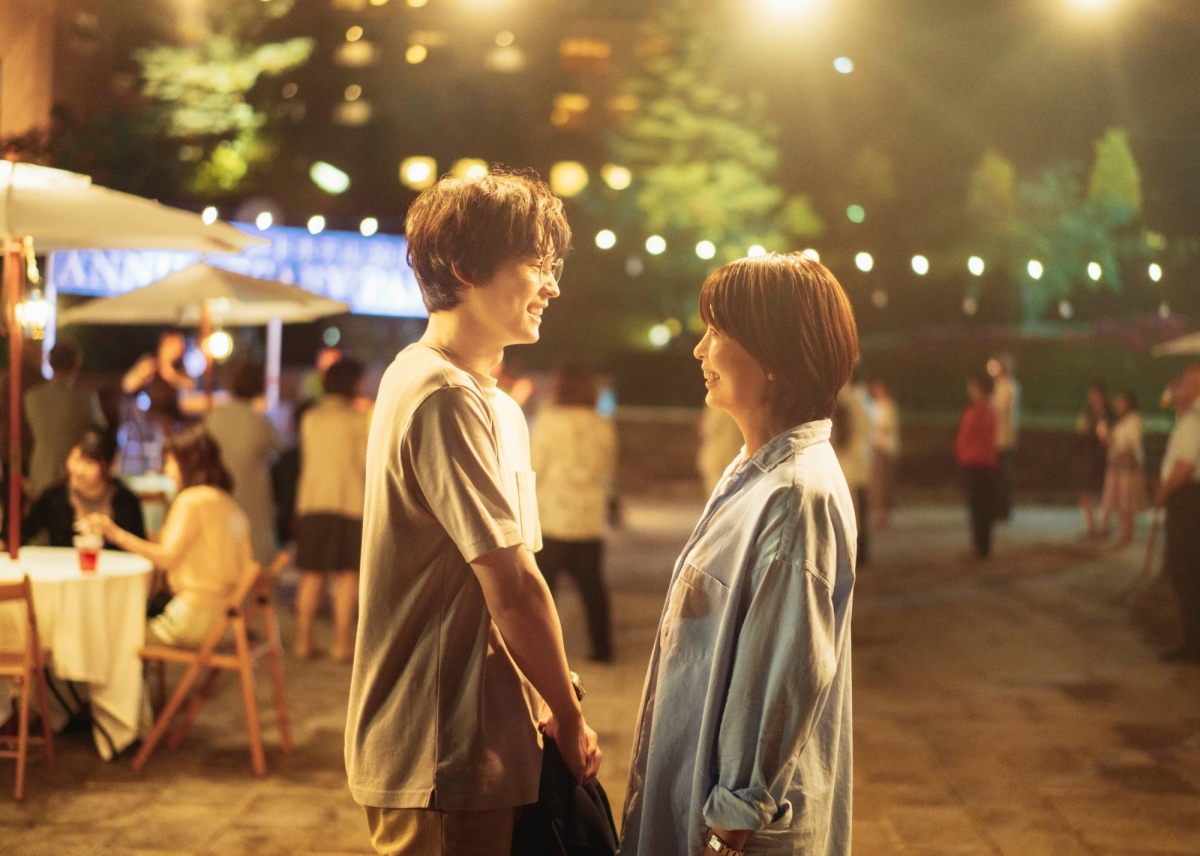
Japanese cinema has long been celebrated for its delicate storytelling, nuanced performances, and poetic visual aesthetics. Among the many themes explored within Japanese films, the depiction of first kisses holds a special place, symbolizing innocence, emotional awakening, and the blossoming of love. These scenes often serve as pivotal moments that capture the audience’s imagination, resonating deeply with viewers across generations. This article delves into the charm, cultural significance, and artistic craftsmanship behind Japanese films focused on first kisses, highlighting their evolution, thematic depth, and the performances that have left an indelible mark on audiences worldwide.
Exploring the Charm of Japanese Films Focused on First Kisses
Japanese films centered around first kisses possess a unique charm that sets them apart from similar scenes in Western cinema. The charm lies in their subtlety and emphasis on emotional authenticity rather than overt dramatization. Directors often employ understated gestures, lingering gazes, and delicate camera work to evoke a sense of innocence and tenderness. This approach allows viewers to immerse themselves in the characters’ personal journeys, making the moment feel genuine and heartfelt. The charm also stems from the cultural context, where modesty and emotional restraint heighten the significance of such intimate scenes, transforming a simple kiss into a profound symbol of connection.
Furthermore, Japanese filmmakers often incorporate everyday settings and relatable scenarios, such as school corridors, cherry blossom gardens, or rainy afternoons, to heighten the scene’s authenticity. These familiar environments evoke nostalgia and emphasize the universality of first love experiences. The use of minimalistic yet poignant storytelling techniques enhances the charm, making the first kiss scene not just a romantic milestone but a reflection of youthful hope and emotional vulnerability. The delicate balance between simplicity and depth creates a captivating atmosphere that resonates deeply with viewers, making these scenes memorable and cherished.
In addition, the charm of these films is often amplified by the performances of young, emerging actors who bring genuine sincerity to their roles. Their natural expressions and subtle body language convey complex emotions that words might fail to express. The chemistry between actors is crucial, as authentic connection makes the first kiss scene feel real and impactful. Cinematographers also play a vital role, using soft lighting, close-up shots, and gentle camera movements to emphasize the intimacy of the moment. Together, these elements craft scenes that are not only visually appealing but emotionally compelling, capturing the essence of first love in a pure and touching manner.
Japanese cinema’s focus on the emotional journey leading up to the first kiss contributes significantly to its charm. The buildup often involves shy glances, tentative touches, and internal conflicts that mirror the characters’ personal growth. This slow, deliberate pacing allows audiences to savor the anticipation, heightening the scene’s emotional payoff. The scenes are often accompanied by subtle visual cues and nuanced acting, which together create a sense of vulnerability and hope. This careful attention to emotional detail elevates the scene from a mere romantic gesture to a meaningful rite of passage, embodying the innocence and transformative power of first love.
Finally, the charm of Japanese films centered on first kisses lies in their ability to evoke universal feelings of nostalgia and longing. Despite cultural differences, many viewers worldwide relate to the innocence, excitement, and nervousness associated with first love. The aesthetic choices—such as the use of natural light, soft color palettes, and poetic framing—serve to amplify these emotions, making the scenes feel timeless and universally accessible. This blend of cultural specificity and universal appeal ensures that Japanese films about first kisses continue to enchant audiences around the globe, reinforcing the scene’s status as a cornerstone of romantic storytelling.
The Cultural Significance of First Kiss Scenes in Japanese Cinema
In Japanese culture, the first kiss holds profound symbolic significance, often representing a rite of passage from innocence to experience, and a milestone in personal growth. Unlike Western portrayals that may emphasize passion and overt romance, Japanese cinema tends to approach the first kiss with a sense of reverence and modesty. It embodies a moment of emotional awakening, capturing the delicate transition from childhood or adolescence into a deeper awareness of love and intimacy. Such scenes are thus imbued with cultural values of purity, sincerity, and emotional restraint, reflecting broader societal attitudes towards romance and relationships.
Historically, Japanese films have used the first kiss scene to explore themes of societal expectations, family influences, and personal identity. In many stories, the act of sharing a first kiss is portrayed as a significant challenge, often accompanied by feelings of nervousness, hope, and vulnerability. These scenes serve as a visual narrative of the characters’ internal struggles and aspirations, emphasizing the importance of emotional honesty over physical expression. Consequently, the first kiss becomes a culturally meaningful act, symbolizing the characters’ readiness to embrace love despite societal pressures or personal uncertainties.
Culturally, Japanese cinema often depicts first kisses during seasons symbolizing renewal and hope, such as cherry blossom season or the rainy season, further reinforcing their symbolic weight. These settings evoke themes of fleeting beauty, transient moments, and the impermanence of youth, adding layers of depth to the scene’s cultural significance. The scenes also tend to be understated, avoiding overt sensuality, in accordance with traditional Japanese values that prioritize emotional connection and subtlety. This approach underscores the importance of sincerity and respect in romantic interactions, aligning with societal norms that emphasize harmony and modesty.
Moreover, the portrayal of first kisses in Japanese films often reflects societal shifts and changing attitudes towards love and relationships. For example, modern movies may depict more open expressions of affection, yet still retain an element of poetic restraint. The scenes serve as cultural markers, illustrating how notions of romance evolve while maintaining core values of sincerity and emotional depth. These depictions also influence public perceptions of love, inspiring young audiences to view first love as a meaningful, transformative experience rooted in genuine connection rather than superficial attraction.
The cultural significance extends beyond individual storytelling, influencing societal conversations about love, maturity, and emotional expression. Films with memorable first kiss scenes often become cultural touchstones, shaping expectations and ideals around romance. They serve as visual metaphors for hope, vulnerability, and the courage needed to embrace love. In this way, Japanese cinema’s depiction of first kisses acts as both a reflection of cultural values and a catalyst for societal dialogue about emotional development, making these scenes more than mere cinematic moments—they are emblematic of broader cultural narratives.
Top Japanese Films Depicting Memorable First Kiss Moments
Several Japanese films have etched their names into cinematic history through iconic first kiss scenes that resonate with audiences worldwide. One of the most celebrated is Your Name (Kimi no Na wa), a beautifully animated film where the protagonist’s first kiss occurs amidst a backdrop of cosmic and emotional upheaval. The scene is tender and poetic, capturing the innocence and longing of young love through delicate animation, expressive character reactions, and evocative music. It exemplifies how animation can elevate the emotional impact of a first kiss, making it a universal symbol of hope and connection.
Another notable film is From Me to You (Kimi ni Todoke), which portrays a shy high school girl’s tentative first kiss with her love interest. The scene is characterized by its gentle pacing, subtle gestures, and a focus on emotional vulnerability. The film’s portrayal of the first kiss emphasizes sincerity and the slow buildup of trust, resonating with audiences who appreciate understated romance rooted in genuine feelings. This scene has become emblematic of Japanese cinema’s ability to depict love’s tender beginnings with authenticity and grace.
Love Letter (1995), directed by Shunji Iwai, features a poignant first kiss scene that embodies nostalgia and emotional depth. The film’s atmospheric visuals, combined with soft lighting and a haunting soundtrack, create an intimate setting that elevates the scene beyond mere romance. The kiss signifies reconciliation and emotional catharsis, making it one of the most memorable moments in Japanese cinematic history. Its understated yet powerful portrayal has influenced countless films exploring the nuances of first love.
In My Tomorrow, Your Yesterday (Boku no Ashita, Kinou no Kimi), the first kiss scene is imbued with a bittersweet tone, reflecting the film’s themes of time and fleeting moments. The scene is visually tender, with close-up shots capturing the characters’ nervous anticipation and heartfelt emotions. It highlights the cultural tendency in Japanese cinema to portray first kisses as significant, emotionally charged milestones rather than casual encounters. This film’s depiction of the first kiss underscores the delicate balance between hope and melancholy that characterizes many Japanese romantic stories.
Orange (2015) offers another memorable depiction of a first kiss, set against the backdrop of supernatural elements and time travel. The scene combines visual symbolism with emotional storytelling, emphasizing the importance of communication and fate in love. The scene’s aesthetic beauty and emotional resonance have made it a standout in contemporary Japanese romance films. It demonstrates how modern storytelling techniques can deepen the significance of first kisses, making them moments of transformative change.
Finally, The Liar and His Lover (2013) features a tender, heartfelt first kiss that captures the innocence and confusion of young love. The scene is marked by its naturalistic acting, warm lighting, and a soundtrack that heightens the emotional stakes. It exemplifies how Japanese films often portray first kisses as pivotal emotional milestones, encapsulating the characters’ growth and emerging feelings. These scenes collectively underscore the importance of authenticity and emotional sincerity in Japanese cinematic portrayals of first love.
Analyzing Romantic Themes in Japanese Movies Featuring First Kisses
Japanese romantic films that depict first kisses often explore themes of innocence, emotional growth, and societal expectations. These themes are woven into the narrative to reflect the characters’ internal journeys and cultural values. The first kiss is usually portrayed as a symbol of transition—from innocence to experience, from uncertainty to confidence—highlighting the personal development that accompanies young love. This thematic focus allows filmmakers to delve into the complexities of adolescence and the universal quest for connection, making the scenes both relatable and meaningful.
Another prevalent theme is the contrast between fleeting moments and enduring memories. Many Japanese films emphasize the transient nature of youth and love, with first kisses serving as poignant reminders of youthful innocence that may fade with time. This motif is often reinforced by visual




